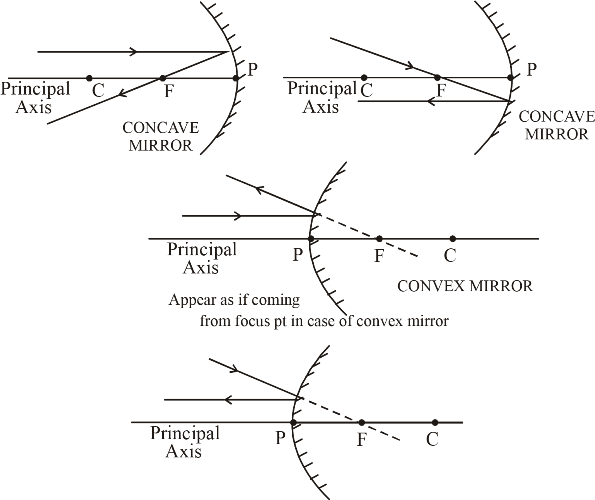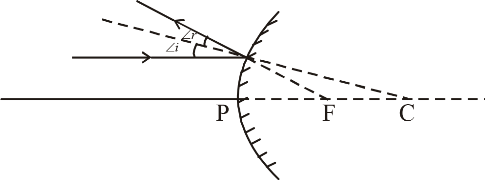
1. Principal axis : Line joining the pole and centre of curvature of the spherical mirror.
2. Pole : The geometrical central point of the reflecting spherical surface. (aperture), denoted by (P).
3. Aperture : The width of reflecting spherical surface.
4. Centre of curvature : The centre of the hollow glass sphere of which the spherical mirror is a part is called as centre of creature.
5. Radius of curvature : The distance between the pole and the centre of curvature. ie. PC = R or The radius of the hollow sphere of which the mirror is a part.
6. Focus point : The point on the principal axis, where all parallel rays meet after reflection is called as Principal Focus or Focus. It is denoted by letter ‘F’.
7. Focal length : The distance between the pole and focus point i.e. PF = f
8. Relationship between focal length and Radius of curvature. F = R/2
Image formation by Spherical Mirror
Before we learn the formation of image or ray diagram, let us go through few tips
(a) Remember, A say of light which is parallel to principle axis always pass through focus (meet at focus) or vice-versa

(b) A ray of light which passes through centre of curvature (it is also known as normal at the point of incidence on spherical mirror) will retrace their path after reflection

(c) A ray of light falling on pole get reflected at the same angle on the other side of principal axis.

Note : A ray of light passes through centre of curvature reflecting spherical surface is always act as normal at the point of incidence. If we know the normal we can draw angle of incidence and angle of reflection


Note 1 : The image will only form when two or more rays meets at a point. Image formation by a concave mirror for different position of the object.
Latest Govt Job & Exam Updates: